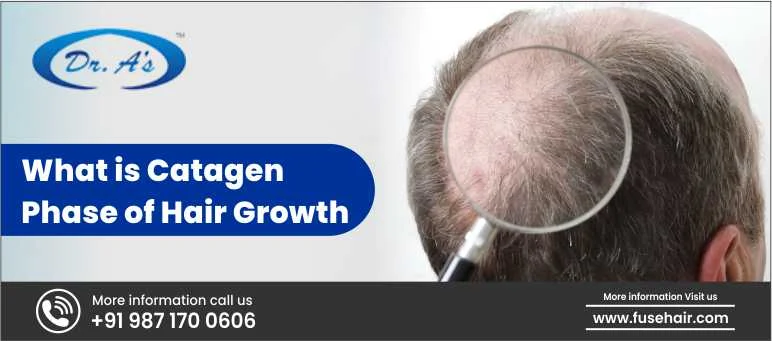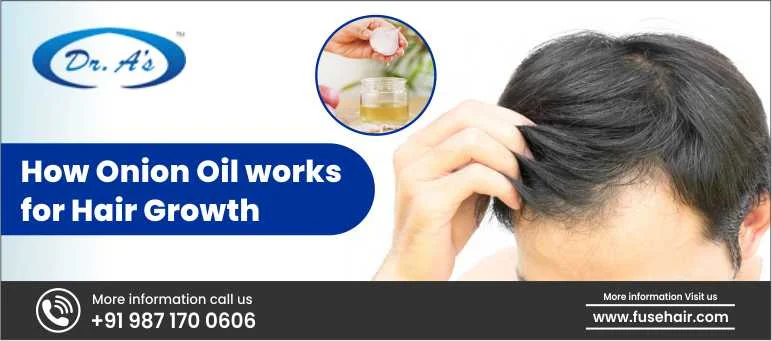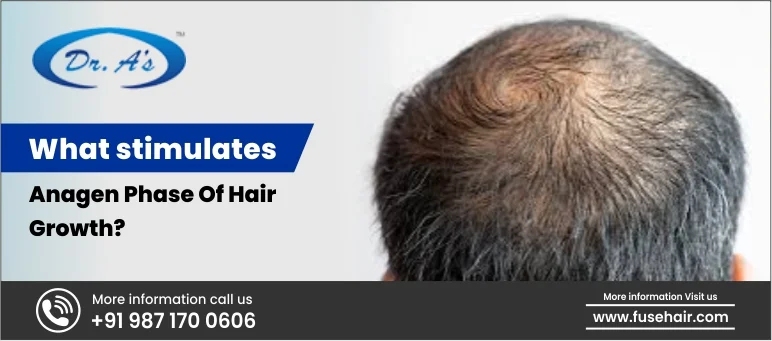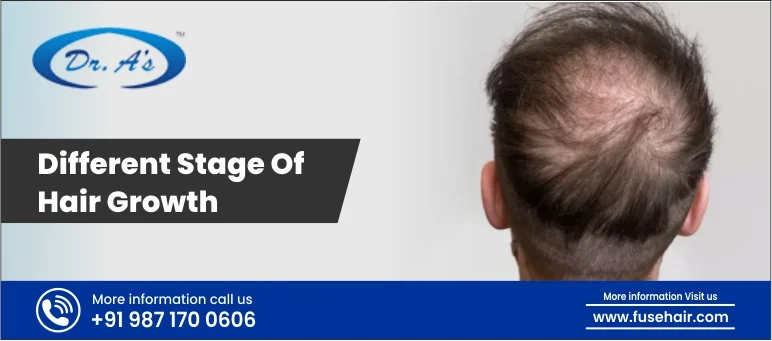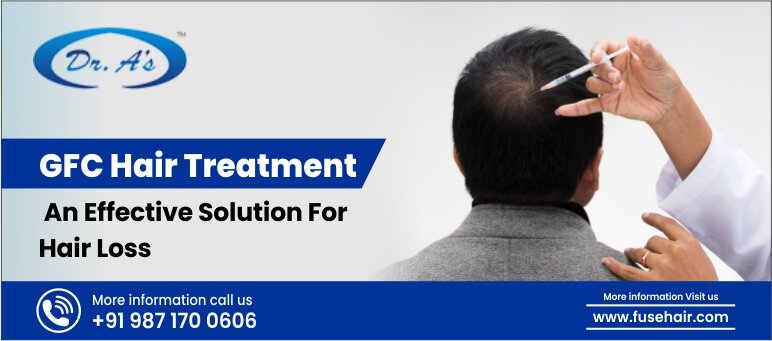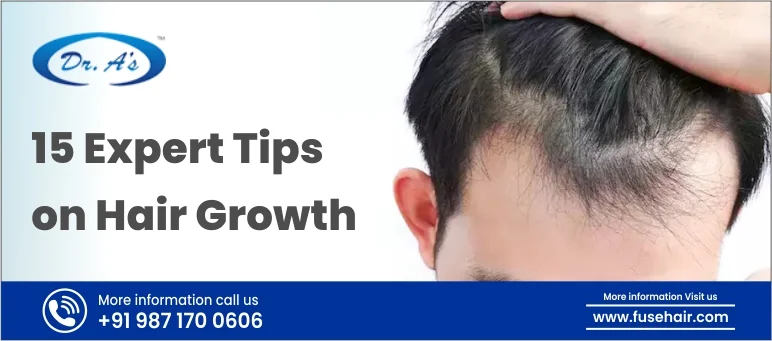
Hair growth is a natural process, and understanding it can help you take better care of your hair. Among the various stages of hair growth, beginning from Anagen, there is a phase called catagen. It is a transitional stage in which your hair gets ready to go from growth to rest.
At this stage, your hair follicles undergo transformational changes, leading to a process called hair regression, so that your hair can proceed to the next phase of development, which is the Telogen. This phase typically lasts for about 2-3 weeks, but is very important for your overall hair growth cycle.
We at Dr. A’s Clinic offer advanced hair restoration treatments to ensure that your hair passes every stage without any hitches for proper growth and development.
In this blog, we will take you through the catagen stage, how long it lasts, and how it influences your hair strands.
What Happens During the Catagen Stage?
The catagen stage is a transitional period in the hair growth cycle, lasting about 2-3 weeks. During this period, hair follicles undergo a massive change. The hair growth stops, and the hair detaches from the blood supply that it needs to grow. This cyclical process is called “hair regression.” The follicle shrinks and produces a small club shape at the end of the strand.
The hair strand slides up through the follicle, forming a gap between the hair and the root. This signifies the conclusion of the catagen (growth) phase and specifically marks the preparation to enter the subsequent stage, known as the telogen (resting) phase. Most importantly, the catagen phase makes way for the new hair that will grow after the telogen phase.
Even though your hair seems to be dormant, the catagen stage is vital for the renewal of your hair strands. Hair follicle regression serves the purpose of replacing the old hair with a new strand of hair when, ultimately, this cycle transitions into the telogen, or resting phase.
This phase is a sign of healthy hair development, as it signals the occurrence of the natural hair growth cycle and serves as a means of detecting early signs of hair problems. At Dr. A’s Clinic, we can help you navigate this complex catagen phase smoothly for maintaining healthy, strong hair.
Role of Hormones and Genetics in the Catagen Stage
The catagen phase is influenced largely by hormones and genetics. Hormones such as dihydrotestosterone (DHT) and cortisol may affect the timing and length of the catagen phase. DHT, which is a byproduct of testosterone, is known to cause hair follicles to shrink and an individual to be more catagen fuzzy, particularly if they are prone to hair thinning or male pattern baldness. Elevated levels of stress, which lead to an increased generation of cortisol, can also disrupt the natural hair cycle, possibly resulting in an early or extended catagen phase.
The duration and effectiveness of your hair growth cycle, however, are encoded in your DNA. Your catagen phase could be influenced if your family has a history of early thinning hair or other scalp conditions. So, understanding these genetic factors can help you predict the health and aging of your hair.
At Dr. A’s Clinic, we provide personalized hair treatments considering your hormonal and genetic factors. Our hair loss treatments have been specifically crafted to nurture healthy hair, no matter where in the cycle it is, from androgenetic alopecia to hormonal imbalances, and everything in between.
Duration of the Catagen Phase: How Long Does It Last?
The catagen stage usually lasts 2–3 weeks. As this transition occurs, hair stops growing and the follicles start to shrink. While this phase is short-lived, it is an important part of the hair growth cycle, as it gets the hair ready for the resting telogen phase.
Factors Affecting the Duration of the Catagen Stage
The length of the catagen phase can vary from individual to individual due to several factors. Here are some of the key factors that play a role in deciding the duration of the catagen phase:
-
Genetics
This is perhaps the most important factor that decides the length of the catagen stage. If your family members or relatives have hair loss due to excessive shedding or thinning, there is a high chance that your catagen phase will be shorter, causing your hair to cycle quickly and giving it less time to grow. Thus, a shorter catagen phase makes your hair more fragile, leading to potential hair loss issues.
-
Hormonal Changes
Hormones affect the hair growth cycle significantly. For example, higher androgen levels (like dihydrotestosterone or DHT) can hasten the transition from the anagen (growth) phase to the catagen phase, thus reducing the latter’s duration. The length of the catagen phase can also be influenced by hormonal fluctuations from pregnancy, menopause, or thyroid imbalances.
-
Stress Levels
Prolonged stress causes harm to hair follicles, so they become susceptible to falling out. Excessive stress production activates cortisol hormone levels that allegedly shorten the catagen phase, and the hair enters the resting phase of telogen prematurely. Survival of hair cells becomes compromised from this process, which eventually causes both hair shedding and hair thinning throughout time.
-
Health and Nutrition
Your overall nutritional health helps your hair to grow better. Vitamin deficiencies such as B12, biotin, or iron can lead to a less healthy cycle of hair growth and possibly impact the length of the catagen phase. Poor diet or underlying health conditions, such as anemia or diabetes, can further disrupt this phase.
-
Age
With age, hair follicles have a tendency to become less active, and the catagen phase may shorten or lengthen depending on individual health. This transition can make some older adults notice thinning or slower growth of their hair.
By knowing these causes, you can take action to restore your hair. If you want to manage your hair growth cycle properly, book a consultation with Dr. Arvind Poswal at Dr. A’s Clinic.
Effects of an Abnormal Catagen Phase
The catagen phase can be interrupted or prolonged, which, in turn, can have drastic effects on your hair growth cycle and eventually hair health. Any shortening or lengthening of the catagen phase can bring undesirable effects by not allowing a smooth transition between active hair growth and rest.
Shortened Catagen Phase
An overly short catagen phase can prevent hair follicles from completely regressing and entering into telogen properly. It may cause premature shedding and insufficient growth of new hair. It can also lead to a condition called “telogen effluvium,” where the hair enters the resting phase prematurely, causing excessive hair loss.
Prolonged Catagen Phase
If the catagen phase does not end in a reasonable time, it may be a sign of an imbalance in the hair growth cycle. This prolonged transition phase may cause the hair bulb to stay dormant for a longer duration, preventing the hair from waking up. In extreme cases, this extended duration of catagen will make the follicle go into a long inactive phase, leading to thinning of hair or even permanent hair loss.
Other Signs That Denote Abnormal Catagen Phase
Other signs that your catagen phase may be abnormal include slower hair growth, uneven hair density, or an overall unhealthy scalp. Hormonal imbalances, stress, poor nutrition, and genetics are some of the main causes of these issues.
At Dr. A’s Clinic, we identify and treat hair cycle disruptions using advanced techniques to help you keep your hair healthy and promote effective hair growth in every state of health condition that you may be undergoing.
How to Maintain a Proper Catagen Phase For Healthy Hair Growth?
The catagen phase is important for the proper execution of other stages of the hair cycle; a proper catagen phase means healthy hair growth. So, here are a few tips recommended by Dr. Arvind Poswal that you can implement during the catagen phase to promote smooth and healthy hair:
Manage Stress
Elevated stress levels may cause your hair growth cycle to stop, resulting in early or extended catagen phases. Practicing meditation, yoga, or workout can help lower the levels of cortisol and foster the growth of healthy hair.
Eat a Balanced Diet
A nutritious diet is paramount to support your hair cycle! The inclusion of vitamins A, B12, C, and E, along with iron and biotin in your diet, will benefit both your hair follicles and hair health, helping you maintain overall good hair health.
Strike a Proper Hormonal Balance
An imbalance in your hormonal levels can disrupt the catagen phase. If you have thinning hair or other scalp conditions caused by hormonal changes, consult a reliable healthcare provider for individualized treatment.
Use Gentle Hair Products
Most hair treatments and chemicals harm your scalp and hair follicles. Choosing the right hair care product is a prerequisite for good hair growth. Using gentle or sulfate-free shampoos and conditioners will help your hair undergo the catagen phase seamlessly, preventing excessive breakage. Other things that you can consider are not to try to pull your hair up tight in the same hairstyle every day, and avoid the use of excessive heat styling tools at every cost.
Conclusion
In terms of healthy hair growth, knowledge of the catagen phase is important. So, to support your hair to go through this important phase of life, you must properly handle your stress, hormones, and diet. To ensure the good health of your hair follicles and boost their development throughout the hair growth cycle, visit Dr. A’s Clinic today!
Under the supervision of Dr. Arvind Poswal, we provide treatments tailored individually to promote healthy hair growth. Depending on your needs, his treatments will optimize your hair growth cycle, including the catagen phase, and help you grow denser, fuller hair.



